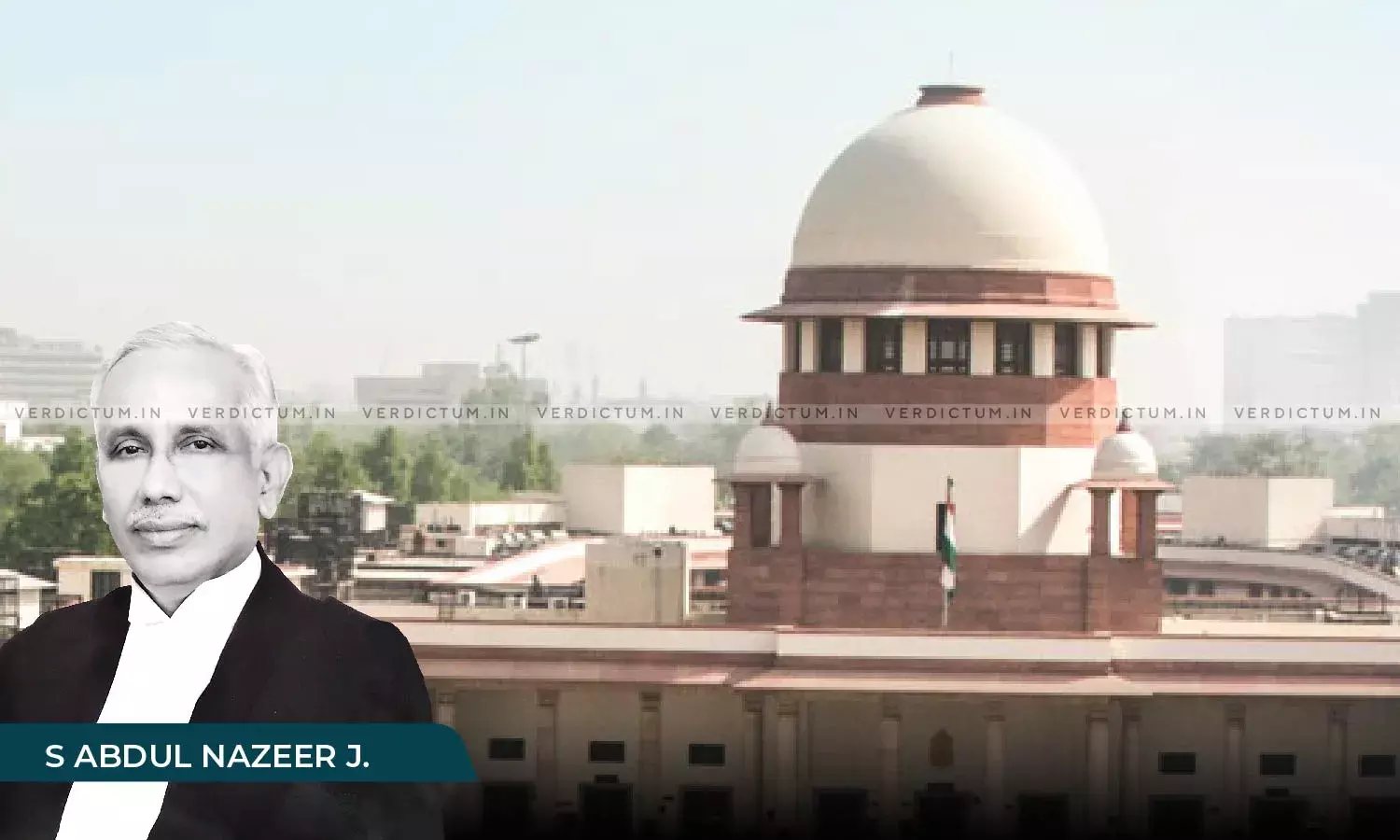'Dharma Protects Those Who Protect It'-Justice SA Nazeer While Delivering His Farewell Speech
Supreme Court Judge, Justice S. Abdul Nazeer who retired as the third senior-most judge of the Apex Court and a member of the Supreme Court Collegium, in his retiring speech, spoke about his journey from childhood to him becoming judge of the Apex Court. He had around six-year-long stint at the Supreme Court.
Justice Nazeer litigated for 20 years at the Karnataka High Court before starting his career as a judge. In 2003, he was appointed as an Additional Judge of the Karnataka High Court and one year later he was made a Permanent Judge. On February 17th, 2017 Justice Nazeer was directly elevated to the Supreme Court without serving as Chief Justice of the High Court and termed the trajectory of his legal career, from a lawyer in Karnataka to a Supreme Court judge, felt like he had “lived a dream”.
CJI DY Chandrachud about Justice Nazeer
CJI said that, he had tough time growing up on farms and beaches “He is a farmer at heart and it was a difficult life for Justice Nazeer to grow up on his uncle's farms and he had even scavenged for fish on the Perambur beach which used to wash up there. It was a journey from there."
Talking about his contributions to legal fraternity, CJI said that he had immensely contributed to jurisprudence in area of family law, administrative law and more and called him as a “people’s judge”, a judge who was dedicated to law and to all those affected by it.
Supreme Court Bar Association President- Vikas Singh about Justice Nazeer
He commended Justice Nazeer said that he, despite being from minority community concurred with the majority opinion in the Ayodhya case and further added that “He is a true embodiment of secularism in this country, he not only agreed to give a unanimous verdict without naming as to who wrote that judgment, being part of that judgment. He agreed with the majority view. And, that judgment shows his true nature because his attitude is that Nation first, him as judge second and him as an individual last in priority.”
He further hailed the collegium system and said that the appointment of Justice Nazeer as Supreme Court Judge was a great example of collegium system working very efficiently of picking somebody who had no backing, who was a first-generation lawyer and who was also from the minority community.
Justice Nazeer had been part of several benches of the Apex Court which delivered historic judgments including the politically sensitive Ayodhya land title dispute, right to privacy and Instant triple talaq. He was also part of a bench who dismissed curative plea seeking investigation into 1989-90 Kashmiri Pandits Genocide.
Justice Nazeer also raised concern with regard to the low representation of women in Judiciary and said that “If I were to say that the Indian judiciary is immune from the gender inequalities that exist in our society, I could not be further away from the reality. Representation of women in the judiciary is still very low. As Kofi Annan rightly said there is no tool for development more effective than women empowerment.”
Justice Nazeer further deliberated on two things-
First, that junior members should be given reasonable opportunities to brief and argue the matters wherever possible and said that “all that younger generation needs is a mentor to channelize their energies and an invisible helping hand. Everyone of us have had mentors in this profession. Therefore, it also becomes our duty to act like one for the new generation.”
Second, that juniors must be paid decently as they are learning to gauge the depth of legal profession and navigating their way. “we cannot afford to loose such good talent just because of the perception that litigation as a career option is not financially unviable.”
The outgoing judge concluded his farewell speech with a Sanskrit Shloka. “I end with a Shloka that relates most with me- dharme sarvam pratishthitam tasmaad dharmam paramam vadanti. dharm ev hato hanti dharmo rakshati rakshitah. It means everything in this world is found on “dharma”, hence, it is the ultimate supreme. Dharma destroys those who destroy it. Dharma protects those who protect it. Thank You. Jai Hind.”




